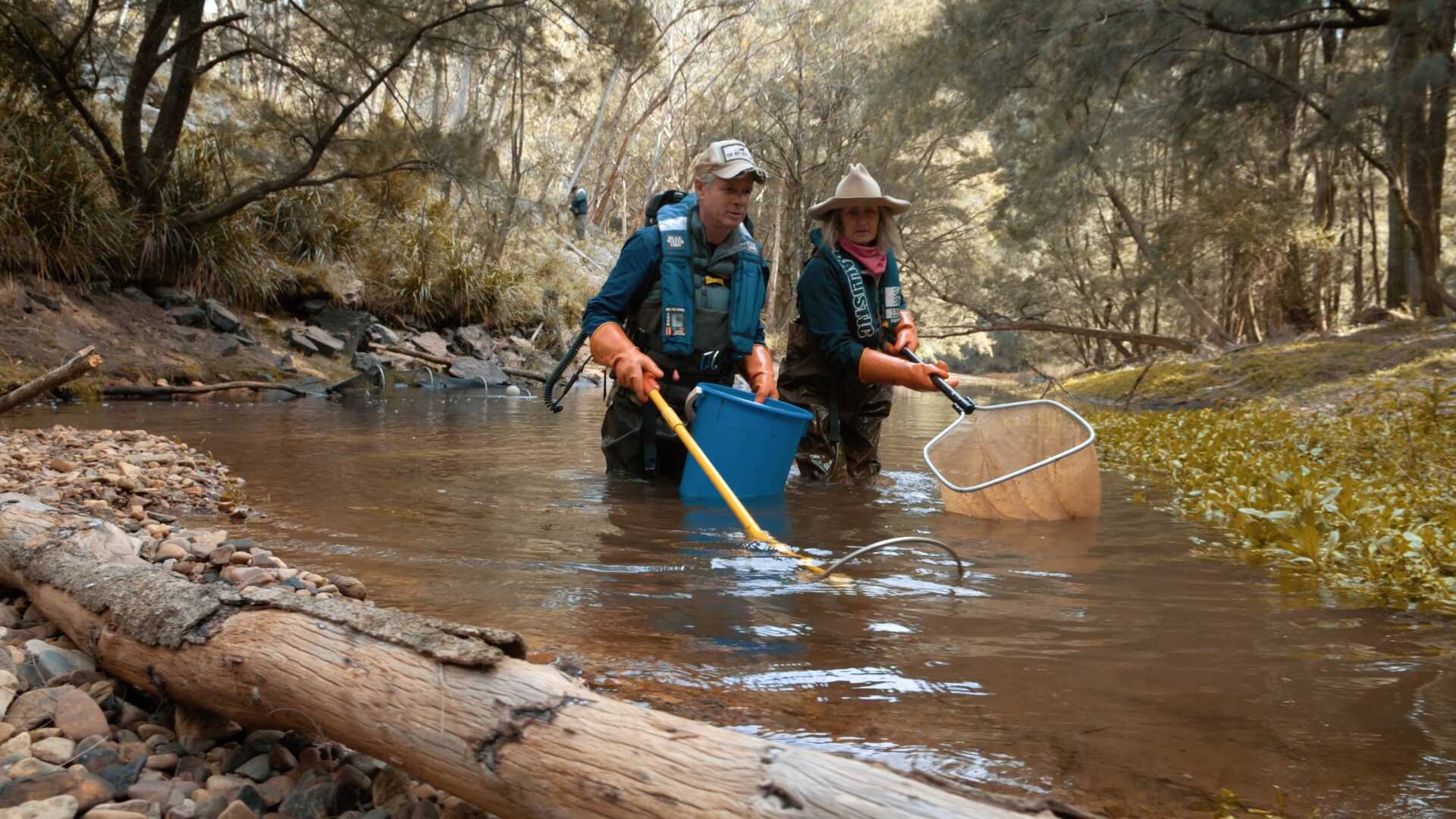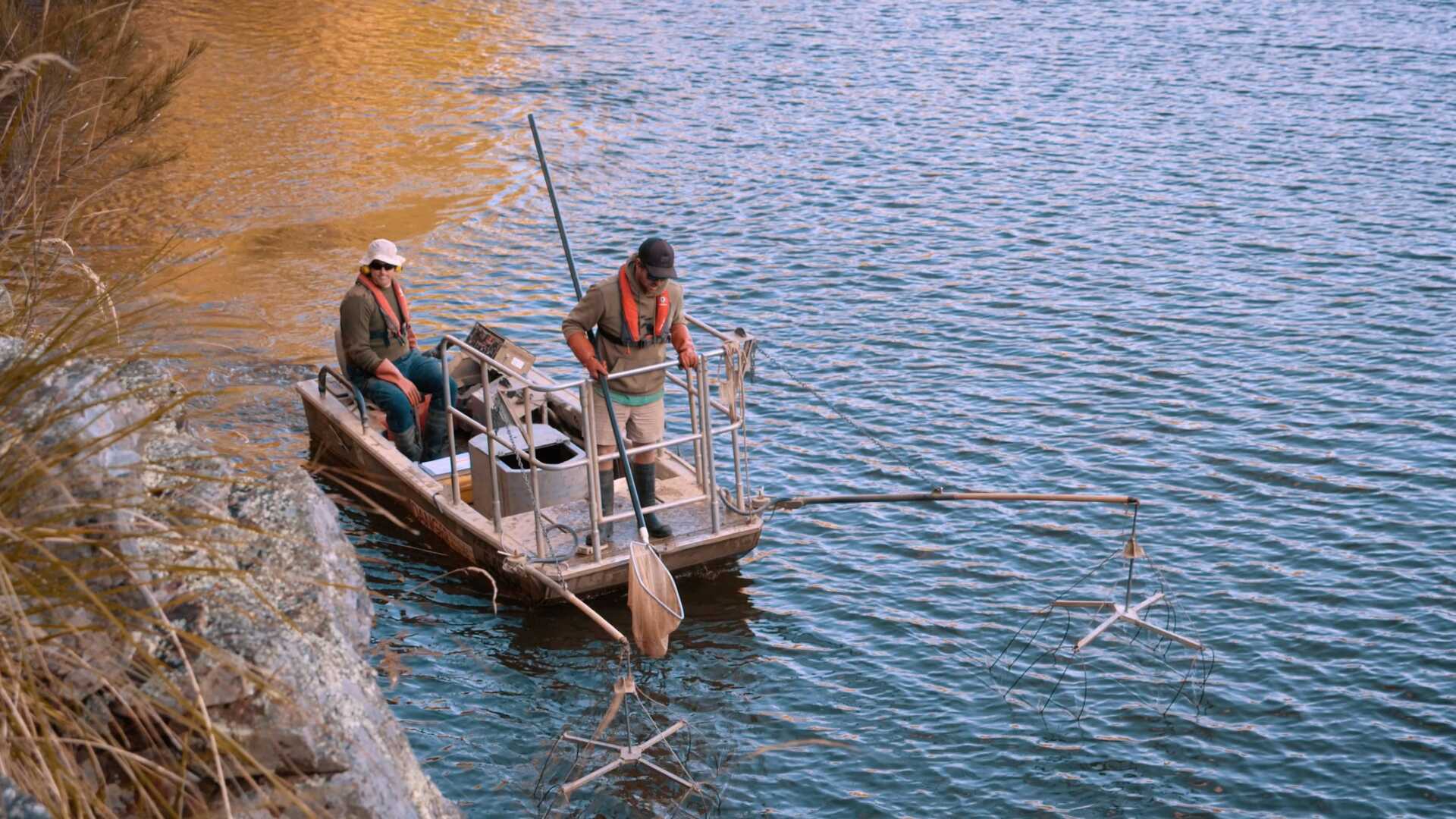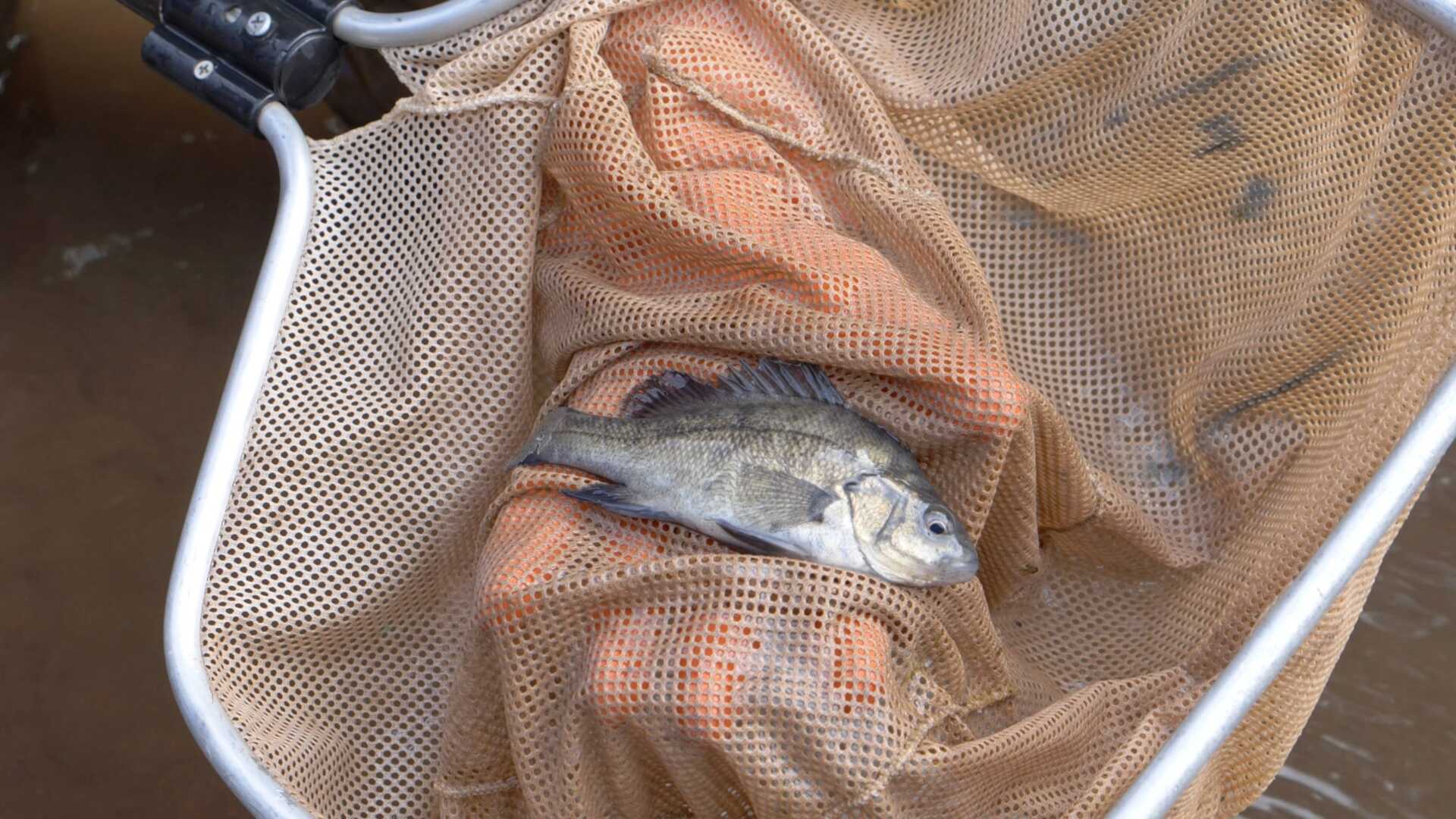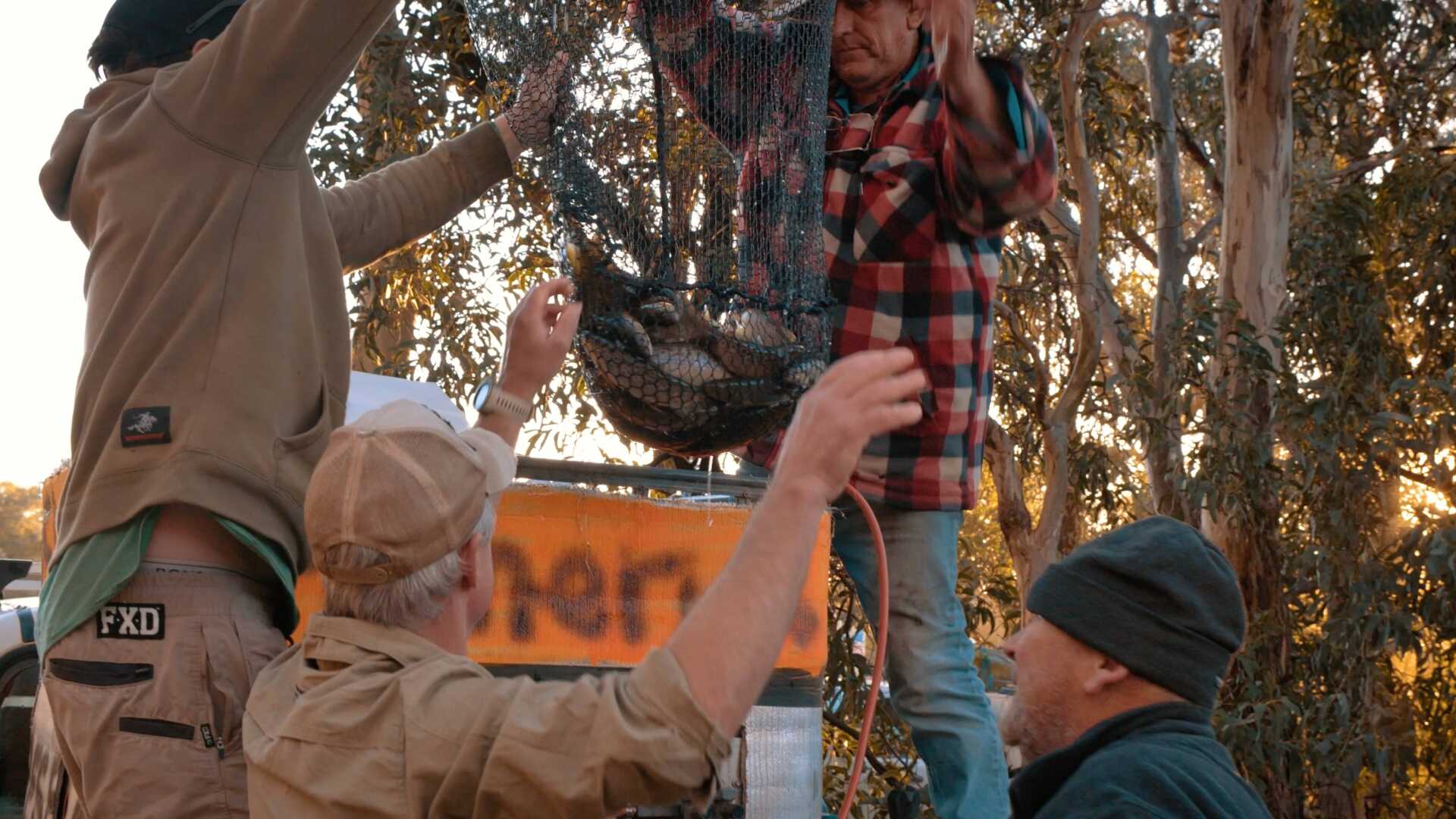Return of the Macca: Turning the tide in a numbers game for endangered native species

The return of the Macquarie perch is gathering pace with volunteers relocating hundreds of trout in Central NSW to help the endangered native species avoid extinction.
OzFish Unlimited – Australia’s fishing conservation charity, NSW Department of Primary Industries Fishing and the Sofala Central Acclimatisation Society have teamed up to remove trout from Winburndale Dam in the Central Tablelands to the nearby Millpond fishery in Portland.
They relocated 237 invasive trout in one weekend recently and have now moved more than 900 in the past few months.
Trout in Winburndale Dam in the upper Macquarie River catchment are usually off limits to fishing but the volunteers in this relocation project were granted special permission to use their reels, nets and engage in electrofishing to catch them.
Luke Pearce, the NSW Department of Primary Industries Senior Fisheries Manager – Habitat & Threatened Species Unit, said Macquarie perch (Macquaria australasica) used to be prolific in the state’s waterways but that’s no longer the case.
“What people don’t understand or don’t have an appreciation for is just how common and how abundant this species was historically,” he said.
“Busloads of people used to come out and catch eskies full of these things. Fast-forward to today, the total length of stream combined that the Macquarie perch now live in is less than 200km for the entire state of NSW.
“In NSW we’ve got four tiny remnant populations remaining so we’ve almost lost them.”
Although the two species live happily side by side, trout eat the same food as Macquarie perch.
Because they outnumber them by 1000 to 1 at the moment, it makes it hard for the Macquarie perch to survive.
“It’s a really special project and a lot of people are proud to work on a species like Macquarie perch,” said OzFish volunteer and passionate recreational fisher Matt Hansen.
“If we can give them some space, create some more food in the system and watch these little guys come along, hopefully we’ll see a spawning event in the near future and the populations of this endangered species move right along.”
Winburndale has also received three Macquarie perch stockings for a total of 10,000 fingerlings.
Completely eradicating trout from the dam is not a realistic option but this project is helping to tip the balance back in favour of the Macquarie perch, ready for spawning time.
By moving the trout, it not only gives the Macquarie perch some much-needed extra space at Winburndale, it improves conditions for local rec fishers when they dangle a line at the Millpond.
“It’s a win-win. It’s a great outcome for Macquarie perch, a threatened species, and it’s a great outcome for rec fishers and the broader community as well,” Pearce added.
“If we don’t continue to do things like we are doing here and continue to try and rebuild populations and reintroduce species back into its former range, I can easily see in my lifetime we could lose this species in NSW.”
Hansen paid tribute to the efforts of the volunteers and hopes to see more rec fishos sign up to continue saving this important native species.
“It’s been a great big team effort, we’ve just been supporting the guys from DPI and CAS with a number of OzFish passionate rec fishing volunteers,” he said.
“I’d love my kids and their kids to see these fish thriving in their local waterways like they once were.
“With over a million recreational fishers in NSW, I don’t think there’s any one of us who wouldn’t want to see Macquarie perch thriving in our waterways again.
“If you’d like to do your part, follow the story of bringing back the Macquarie perch, sign up to OzFish, follow the Sofala CAS and know that you’ve done your bit to bring back the Mac.”
This project is a collaboration between the NSW Government, OzFish Unlimited, and Central Acclimatisation Society Inc, with funding support from NSW Recreational Fishing Trusts and BCF – Boating, Camping, Fishing.





